Properly harvested wood is one of the most environmentally friendly materials existing in the furniture industry. It is an easily renewable raw material, and its natural decomposition or disposal is much safer and more environmentally friendly than that of other materials, such as plastic or metal.
The fact that wood as a raw material is used almost 100% is also of great importance. Waste from the solid wood harvesting process and from forest management (e.g. thinning) is processed into a variety of wood-based materials, and in this form is a valuable and desirable carpentry material. In commercial built-ins, its derivatives such as MDF, plywood, particleboard and OSB are used far more often than solid wood. Why?
The obvious argument is the economic aspect, since these materials are cheaper than solid wood. However, it is worth knowing that from Concession’s point of view, as a contract furniture contractor, their most important assets include their performance characteristics as well as physical and chemical composition.
Key importance of certificates and approvals
Thanks to the appropriate development of technological processes and the use of selected additives (adhesives, varnishes), a raw material with known emission performance parameters and guaranteed flame retardancy is produced. In the context of environmental standards, regulations and certifications, this is a key feature. Wood-based materials with varying levels of volatile compound release are available on the market, including those with zero formaldehyde emissions required for commercial projects. Depending on the type of project and the customer’s needs, Concession is able to select a raw material with the appropriate properties. Solid wood does not offer such wide possibilities.
In terms of flame retardancy certificates, the construction law mandates the use of materials in construction that do not contribute to the spread of fire in the first place. This is especially important in public buildings and places where more than 50 people stay at a time. The characteristics of a given raw material are indicated by its flammability rating. Flame-retardant material can achieve a certificate as high as class B-s1, d0 – which defines it as a safe and flame-retardant material that emits very little smoke and does not produce flaming droplets. Only such raw material can be used for contract built-ins in evacuation zones (e.g., corridors), or built-in permanent furniture sets (e.g., kitchen built-ins), as well as ceilings and wall claddings.
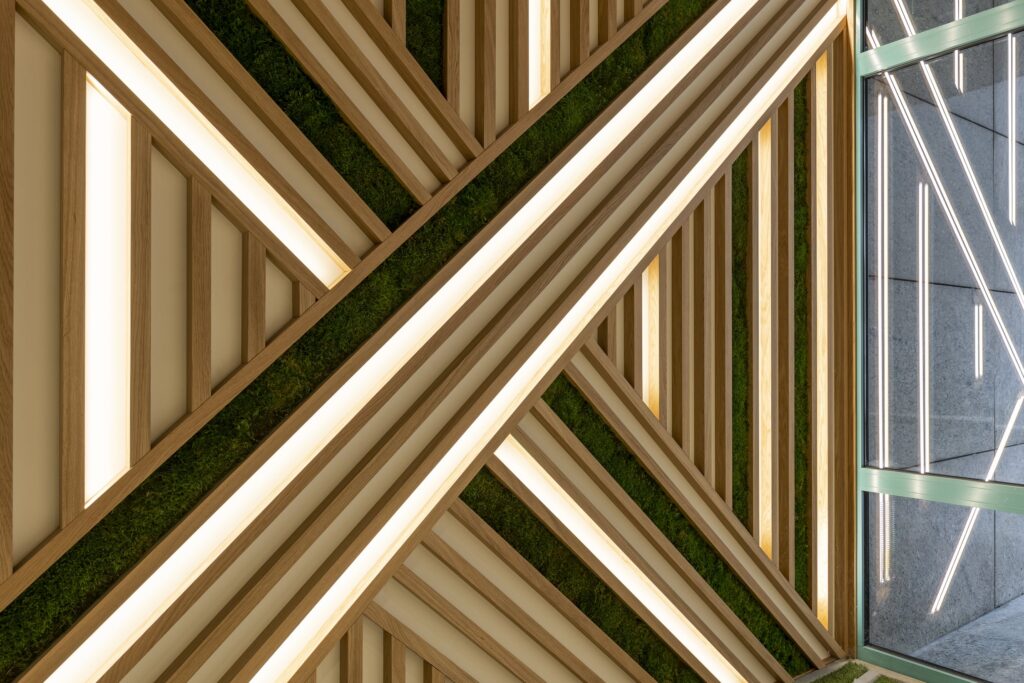
Wood-based raw materials 100% recyclable
The production of wood-based products mainly uses waste wood material which comes from both natural wood and all its derivatives. As a result, raw materials such as furniture boards are 100% recyclable. All production waste, as well as the remains of old built-ins, recovered in refitting projects, can be used in a circular production. Increasingly, they are being collected by board manufacturers and sent for recycling. Such conduct is an invaluable ally of the environment and has significant economic benefits.
In the case of some projects, for particularly environmentally conscious customers, we try to make our production based on such recycled raw materials to the greatest extent possible. The carbon footprint of such projects is even lower than that of standard built-ins, and they are truly environmentally-friendly.
Excellent processing characteristics and high stability
High strength parameters, ease of processing and stability are another group of features for which we value wood-based raw materials so much. Working with particleboard, MDF or plywood, we know how to mould them effectively and we are confident that the parts obtained from them will not be subject to deformations. We also know what material to choose for the product so that the effect is the best possible. Properly selected and finished materials ensure durability for years and are perfect for the heavily used spaces.
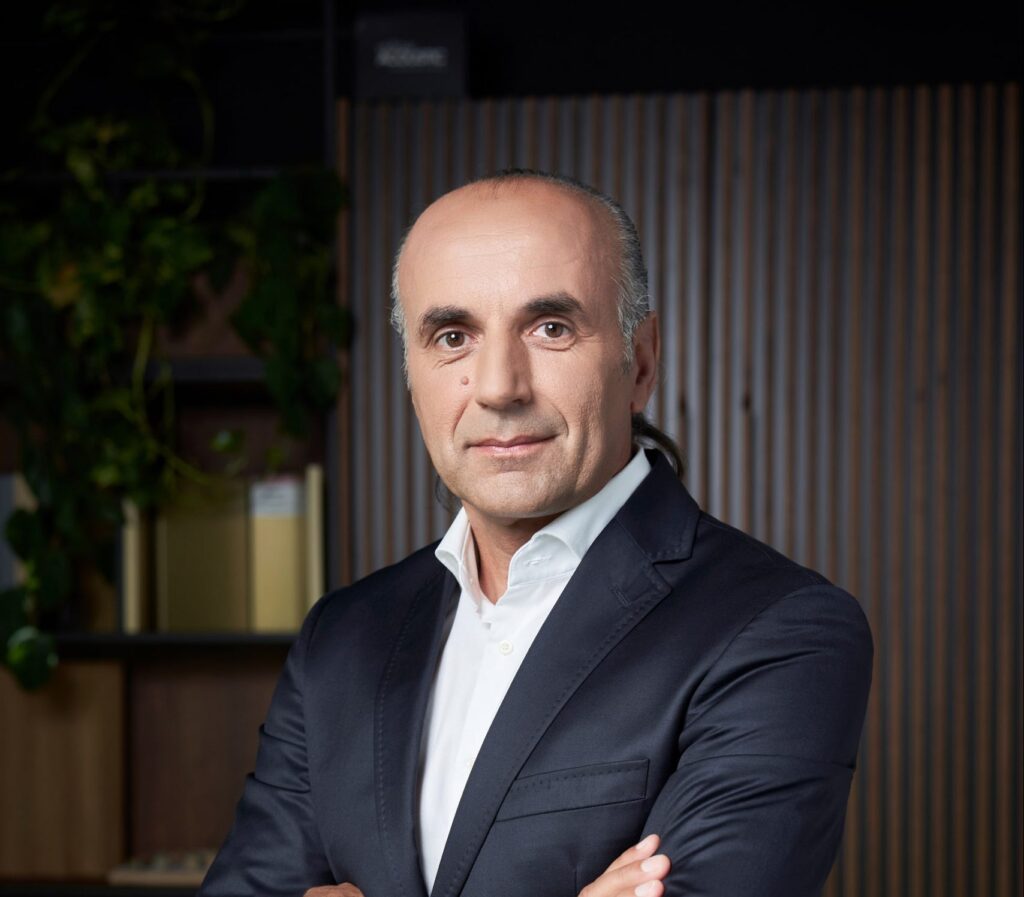
Concession Vice President Leszek Matocha, who is responsible for production at the company, emphasizes: “In 25 years of practice, we have gained such experience that no raw materials have secrets from us. We work with wood and all kinds of boards, plywood and composites. We have also achieved proficiency in the veneers treatment.
In the contracts we carry out, there are often complex and customized elements and also with significant dimensions. Making use of our know-how, we advise customers on what materials and technology are best to execute the products, so that the effect meets the expectations and the end product is durable in use”.
Wood-based materials in Concession projects
MDF – high processing potential and high strength
MDF boards, due to their mechanical properties, successfully replace natural wood. MDF is made by pressing wood fibres with the addition of organic adhesives and hardeners, subjected to high pressure and temperature. As a result, the material has a uniform density and raw material composition throughout. MDF boards, thanks to the possibility of forming the surface (milling, grinding), are used to make decorative varnished or foiled elements. Their key feature is their treatment capabilities to fit the unusual shapes of commercial space built-ins and their ability to reduce production waste to a minimum. MDF boards are available with enhanced water and fire resistance, which is a standard requirement in contract built-in projects.
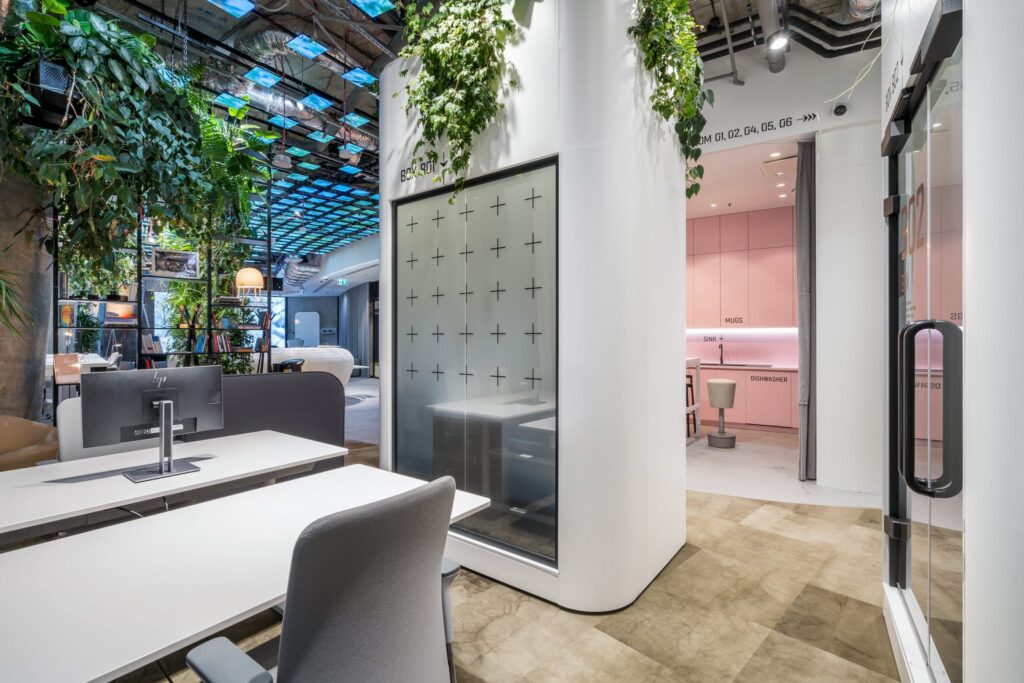
MDF boards offer great design possibilities. In the project for one of the banks, the walls of acoustic telephone booths were made of the MDF boards.
Plywood – natural beauty and unusual properties
Plywood is a material with unique properties, often used for the creation of furniture of atypical shapes. It is formed from several layers of wood lamellas. Usually the number of layers is odd. Plywood, depending on its intended use, is between 3 mm and 5 cm thick. It can be used in its raw state or finished with veneer, lacquer or laminate.
The properties of plywood are definitely higher bending, tensile, compression and shear strength than that of other wood-based products: MDF, OSB or particleboard.
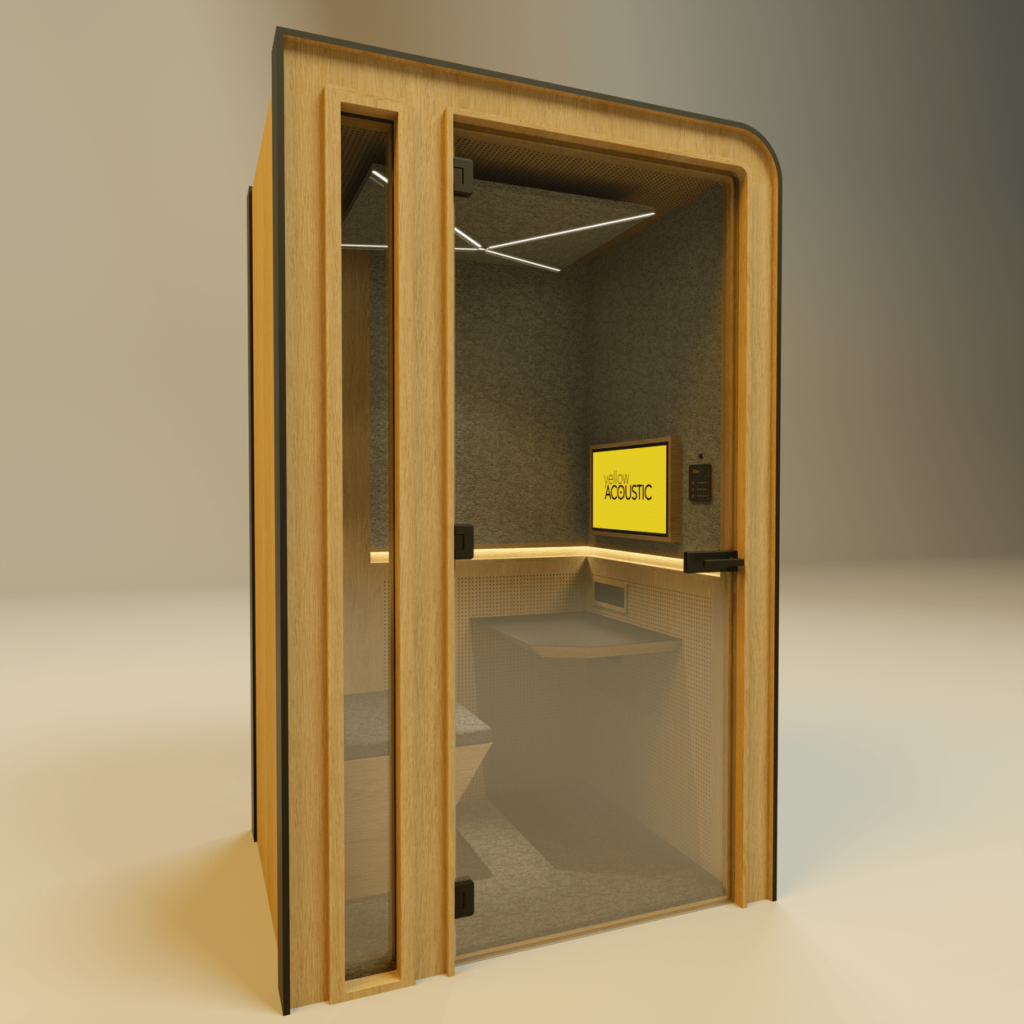
At Concession, we value plywood very much. It gives great opportunities to create interesting visual solutions and is durable. Finished with natural veneer, it is as beautiful as solid wood. It is plywood that we chose to make our proprietary product – free-standing acoustic booths.
Particleboard – a versatile material for many applications
Particleboard is made by gluing wood chips pressed under high pressure and temperature. It is one of the most widely used raw materials, and both its excellent performance characteristics and trouble-free industrial production have contributed to its immense popularity. Particleboard is often the best choice where resilience matters. In this respect, this material is superior to the popular and well-liked MDF.
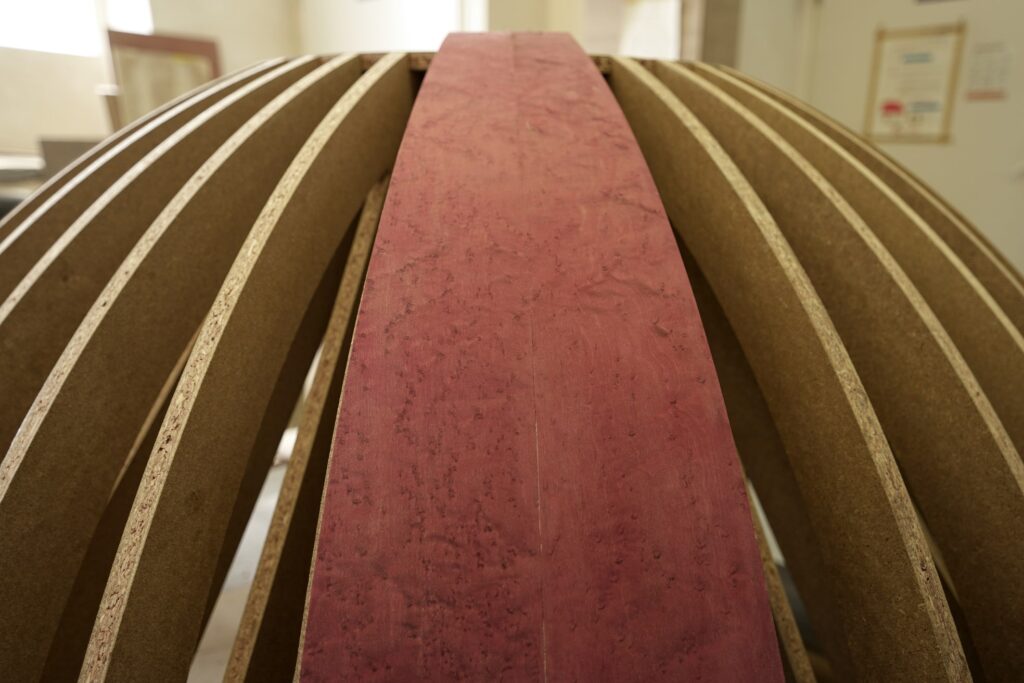
At Concession, we use particle boards of varying parameters, selecting them according to the needs of the product. They are an excellent structural base, including in bulky products and complex elements, such as attractive counters and domes.
OSB – extraordinary decoration
One of the commonly used wood-based materials is OSB (Oriented Strand Board), which is produced from selected tree trunks, the so-called cuttings sourced primarily from forest maintenance thinning. The good technical parameters of OSB are due to the preservation of the fibrous nature of the wood, forming a structure of interlocked chips, which, for example, prevents the edges from breaking off. OSB is generally used as a structural, architectural material.
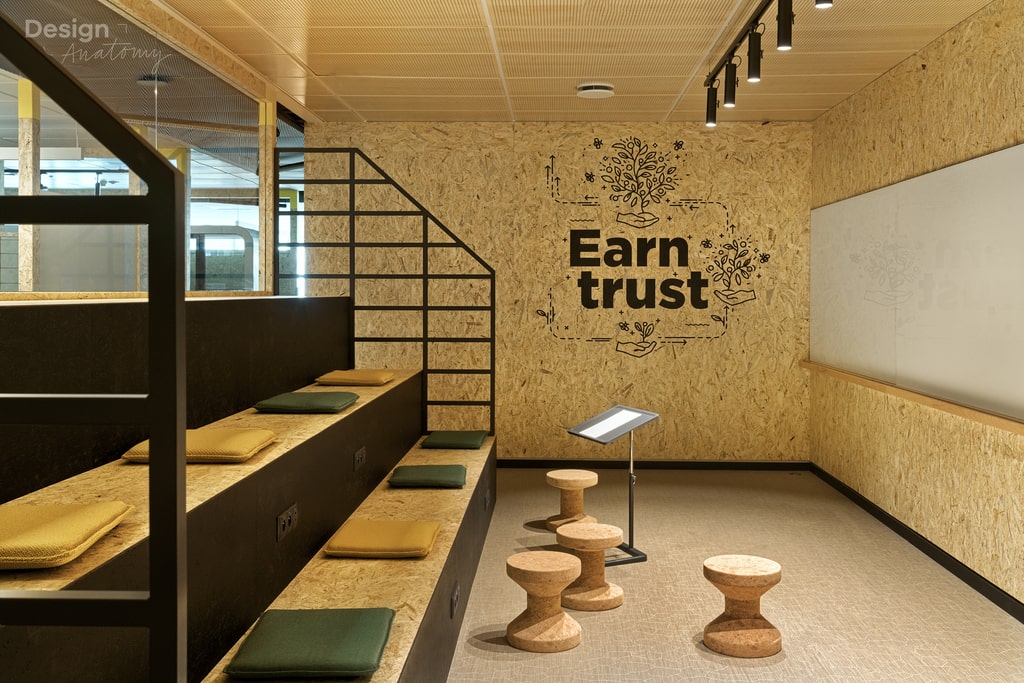
A project for a client in the Olivia Business Center was an interesting application of OSB by Concession. This generally structural material was mounted at the wall in the form of decorative sheets embellished with applications. Given a choice of laminated, MDF or veneered boards, Concession Europe was asked to use the most environmentally friendly raw material to ensure unique effect.
Veneer – natural finish
All types of particleboard and plywood can be finished using veneers, which are thin layers of natural wood. Due to the visible grain, the raw material achieves a noble and striking appearance, so desired by customers. At the same time, with the use of appropriate varnishes, the veneered boards retain the characteristics of the base material, such as flame retardant approvals and VOC certificates.
Many of Concession’s projects base their strength on the superior appearance of the veneered panels. A project implemented for Microsoft Poland, which used large areas of walnut veneer may serve as an example. The material required conscious and precise arrangement to make the end result as intended, but the effort was definitely worth it. The finished project is impressive in form and grain.
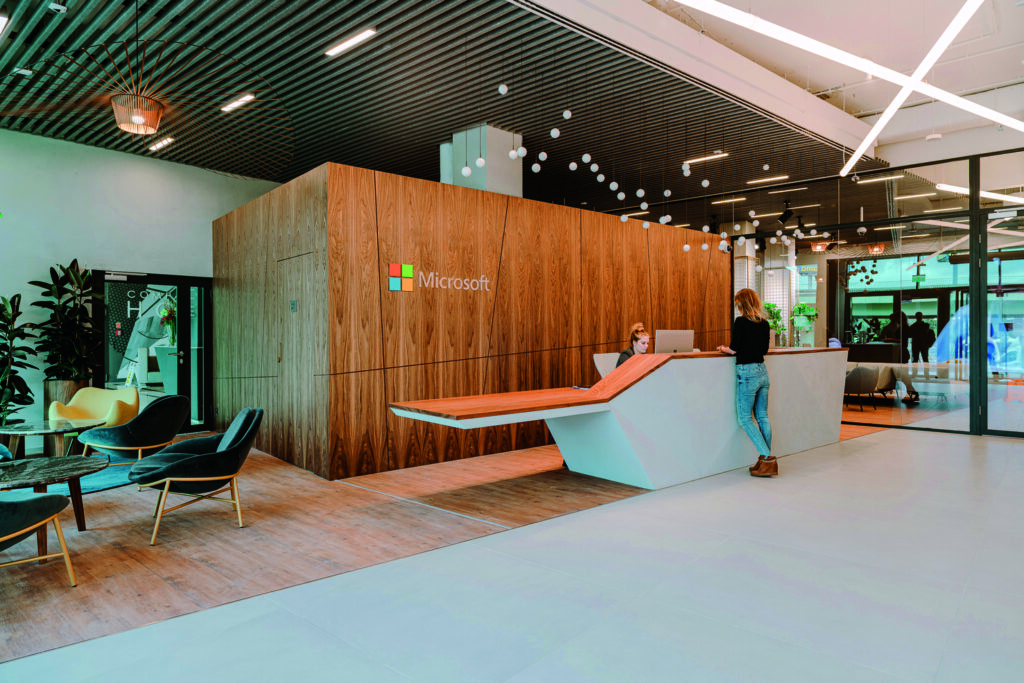
The REN PLAZA space has also been finished with veneered elements. The multi-layered 3D structure combined with the lighting system produced a striking and very original result and the impression that the built-in was made of natural wood. At the same time, all the materials used had the flame retardant certificates required for permanent built-ins.
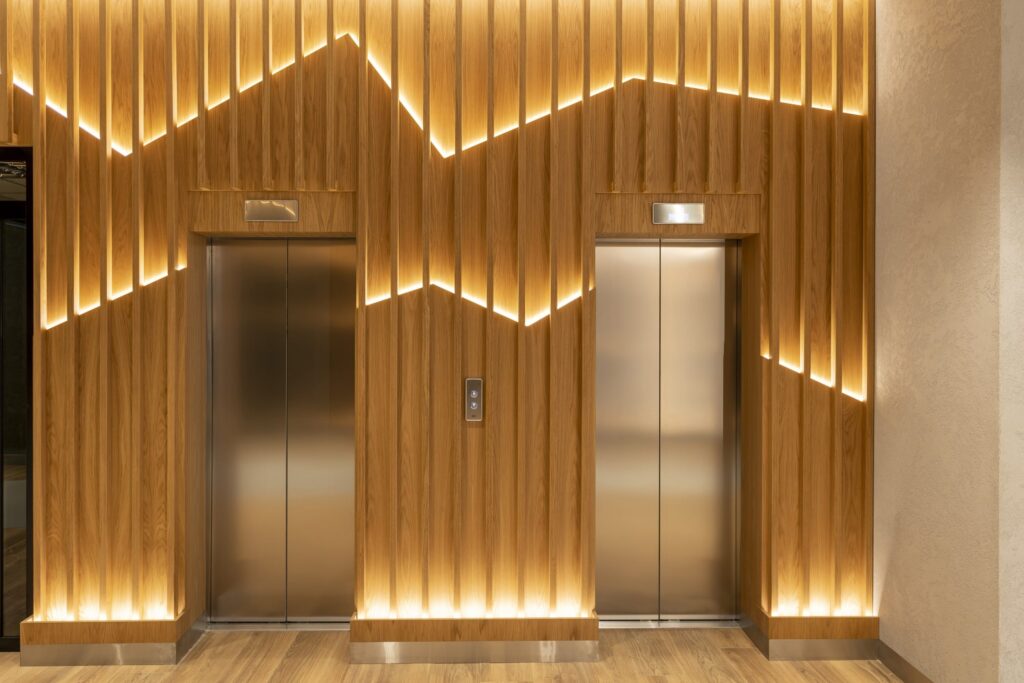

Subscribe to our newsletter and stay up to date.